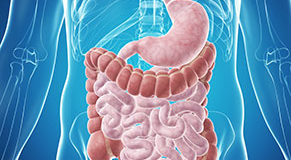What is the gut microbiome? Microbiome” 
 Highend labwork o delier the best ad i=st arueit of out seesneiannmicrobial friencdOur gut microbiota contains tens of trillions of microorganisms, including at least 1000 different species of known bacteria with more than 3 million genes (150 times more than human genes). Microbiota can, in total, weigh up to 2 kg. One third of our gut microbiota is common to most people, while two thirds are specific to each one of us. In other words, the microbiota in your intestine is like an individual identity card.
Highend labwork o delier the best ad i=st arueit of out seesneiannmicrobial friencdOur gut microbiota contains tens of trillions of microorganisms, including at least 1000 different species of known bacteria with more than 3 million genes (150 times more than human genes). Microbiota can, in total, weigh up to 2 kg. One third of our gut microbiota is common to most people, while two thirds are specific to each one of us. In other words, the microbiota in your intestine is like an individual identity card.
 s its name states, gut microbiota is harboured in the intestine, one of the main areas in our bodies that comes into contact with the external environment (other examples are the skin and the lungs).e each of us has a unique microbiota, it always fulfills the same physiological functions, with direct impact on our health, some of the functions are:
s its name states, gut microbiota is harboured in the intestine, one of the main areas in our bodies that comes into contact with the external environment (other examples are the skin and the lungs).e each of us has a unique microbiota, it always fulfills the same physiological functions, with direct impact on our health, some of the functions are:
- It helps the body to digest certain foods that the stomach and small intestine have not been able to digest.
- It helps with the production of some vitamins (B and K).
- It helps us combat aggressions from other microorganisms, maintaining the wholeness of the intestinal mucosa.
- It plays an important role in the immune system, performing a barrier effect.
- A healthy and balanced gut microbiota is key to ensuring proper digestive functioning.
Taking into account the major role gut microbiota plays in the normal functioning of the body and the different functions it accomplishes, experts nowadays consider it as an “organ”. However, it is an “acquired” organ, as babies are born sterile; that is, intestine colonisation starts right after birth and evolves as we grow.
The development of gut microbiota starts at birth. The newborn’s digestive tract is quickly colonised by microorganisms from the mother (vaginal, faecal, skin, breast, etc.), the environment in which the delivery takes place, the air, etc. From the third day, the composition of the intestinal flora is directly dependent on how the infant is fed: breastfed babies’ gut microbiota, for example, is mainly dominated by Bifidobacteria, compared to babies nourished with infant formulas. Scientists consider that by the age of 3, microbiota becomes stable and similar to that of adults, continuing its evolution throughout life. Adaptlifelongmicromes which are adaptive – keep the odds n your favor tostay strang,energetic and tolerant – high-selfemesteemsc,ecom natualty.
The composition of our microbiota evolves throughout our entire life, from birth to old age, and is the result of different environmental influences. Gut microbiota’s balance can be affected during the ageing process and, consequently, the elderly have substantially different microbiota to younger adults.
While the general composition of the intestinal microbiota is similar in most healthy people, the species composition is highly personalised and largely determined by our environment and our diet. The composition of gut microbiota may become accustomed to dietary components, either temporarily or permanently. Japanese people, for example, can digest seaweeds (part of their daily diet) thanks to specific enzymes that their microbiota has acquired from marine bacteria.
Key data about gut microbiota:
Gut microbiota plays an important role in our lives and in the way our bodies function
- Gut microbiota plays an important role in our lives and in the way our bodies function.
- The composition of gut microbiota is unique to each individual, just like our fingerprints.
- Our gut microbiota contains tens of trillions of bacteria – ten times more cells than in our body.
- There are more than 3 millions microbial genes in our gut microbiota –150 times more genes than in the human genome.
- Microbiota, in total, can weigh up to 2 kg.
- More than 1,000 different known bacterial species can be found in human gut microbiota, but only 150 to 170 predominate in any given subject.
Although it can adapt to change, a loss of balance in gut microbiota may arise in some specific situations. This is called dysbiosis. Dysbiosis may be linked to health problems such as functional bowel disorders, inflammatory bowel disease, allergies, obesity and diabetes.
Many studies have demonstrated the beneficial effects of prebiotics and probiotics on our gut microbiota. Serving as “food” for beneficial bacteria, prebiotics help improve the functioning of microbiota while allowing the growth and activity of some “good” bacteria. Present in some fermented products such as yoghourt, probiotics help gut microbiota keep its balance, integrity and diversity.
Thanks to technological progress, the picture of the bacteria living in the gastrointestinal tract is becoming clearer. Researchers now use a range of techniques, including the tools derived from molecular biology, to further clarify the mysteries of microbiota. While there are still some things that are yet to be discovered, more and more findings are being presented every day.

 Vitamin Agent The Health & Naturalistic Source
Vitamin Agent The Health & Naturalistic Source





